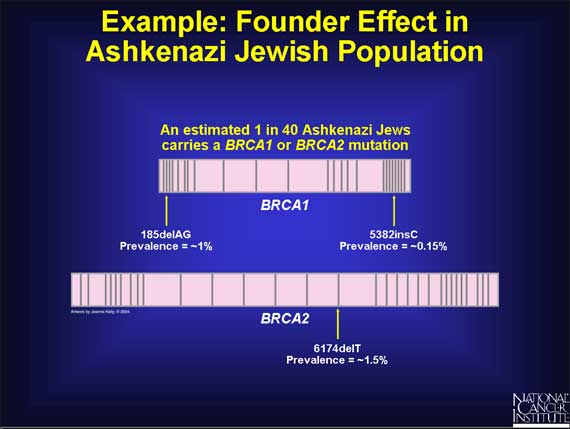|
Because of reproductive isolation, later generations of an isolated population
will have a higher frequency of a mutation than the original population. For
example, Ashkenazi Jews were segregated from the rest of the population and
lived in separate communities for hundreds of years. Today, one percent of the
Ashkenazi Jewish population--one person in 40--carries a 185delAG mutation in
BRCA1, which places them at higher than the average risk for breast and ovarian
cancer.

< Previous | Index | Next Slide > |